Inscribed in the UNESCO world heritage list, the Prague Castle Complex is a group of palaces and church buildings of varying architectural styles. Here you will find 10th Century Romanesque buildings as well as the newest modifications of the 20th Century. The castle complex is the seat of the Head of State and is a culturally significant monument. Within the complex walls, there are the remains of Czech Kings, Christian relics, historical documents and artistic treasures.
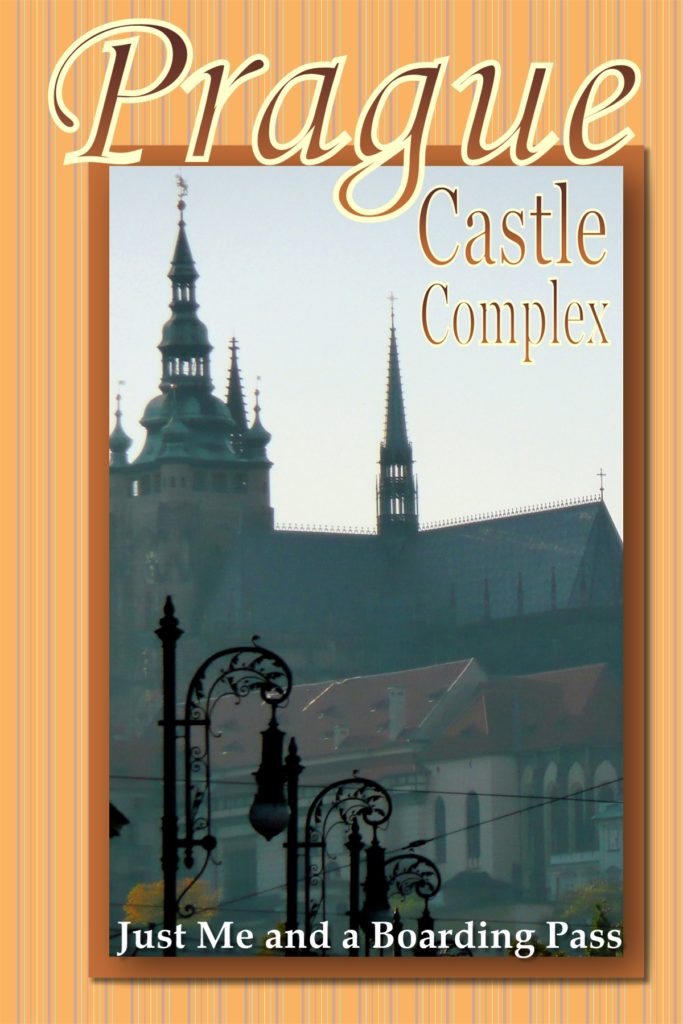
Prague Castle
Prague castle, founded around 880 a.d., is the largest medieval castle in Europe and was the seat of the Kings of Bohemia. Today, the President of the Czech Republic rules from here. A changing of the guard ceremony takes place daily on the hour.



St Vitus Cathedral
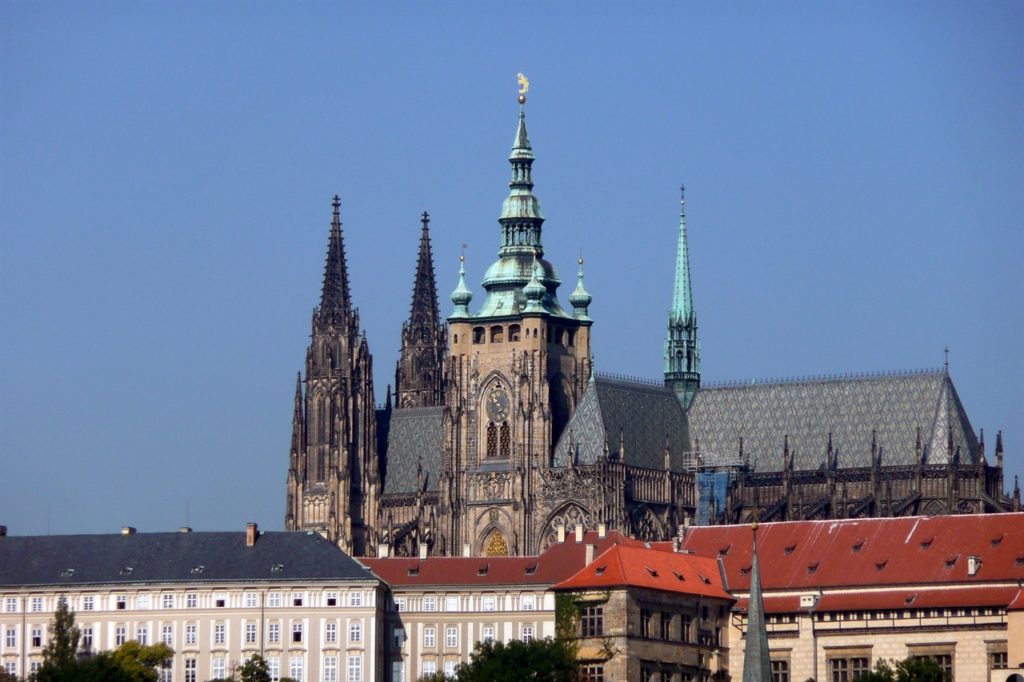
Outside
Construction began in 1344 and took six centuries to complete this amazing church. Looking at the building from the outside needs a bit of time to appreciate the intricate detail. Delicate stonework and metal work, towers and mosaics. Uniquely carved gargoyles whose practical function is to divert water runoff away from the stone work to protect from erosion. As the largest and most important church in Prague, it has overseen the coronation of Czech Kings and Queens for centuries.




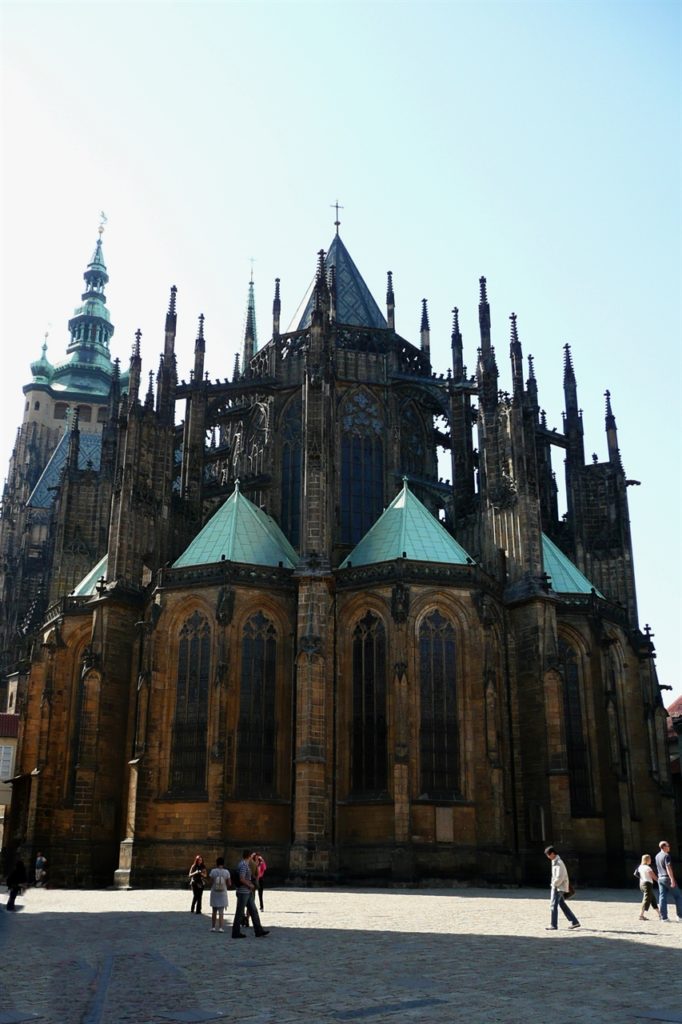
The eastern facade of the church ( the back )
Inside
Inside the church is even more of a feast for the eyes. Stained glass windows tell stories with a kaleidoscope of colour. Ornately gilded ironwork separates the smaller elaborately decorated chapels from the main nave. Lofty, crisscrossing double diagonal ribs intersect along the length of the cathedral. This creates an ornamented net-like pattern across the roof.


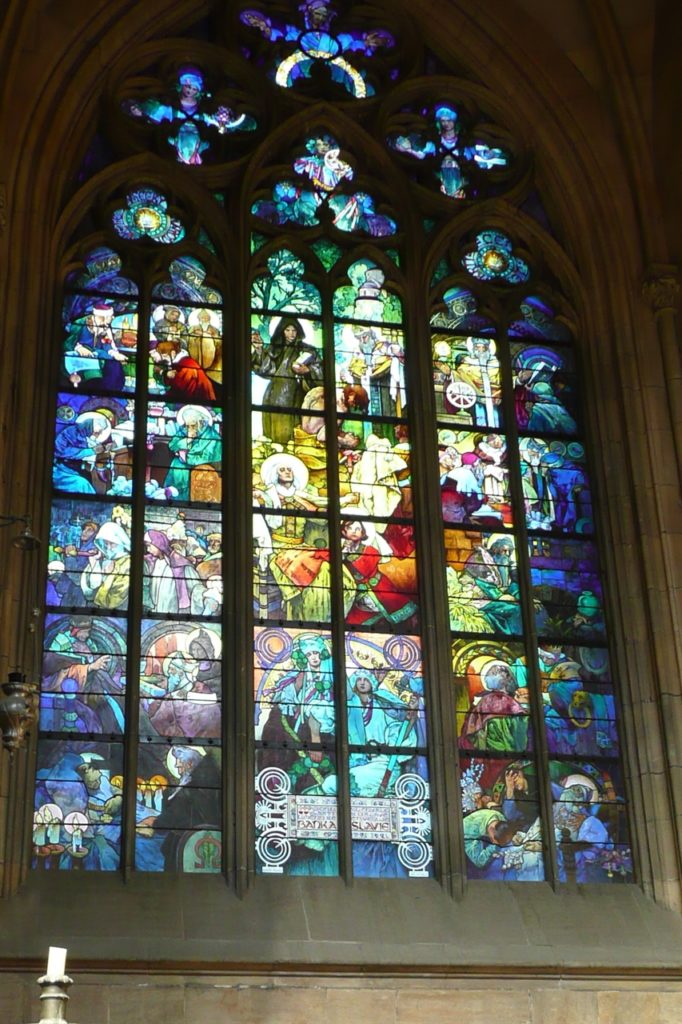


Tomb of St John Nepomuk
John of Nepomuk was martyred in 1393. He served as the court priest of King Wenceslas IV, and the confessor of the Queen. The king wanted to know what the Queen was confessing but John would not tell him. So the King had John arrested, tortured and thrown – bound and gagged – off the side of the Charles Bridge into the Vltava River. Legend says that stars appeared when John touched the water and drowned. These stars are depicted on all his statues. You can see the five gold stars in a halo around his head on the statue above his tomb.
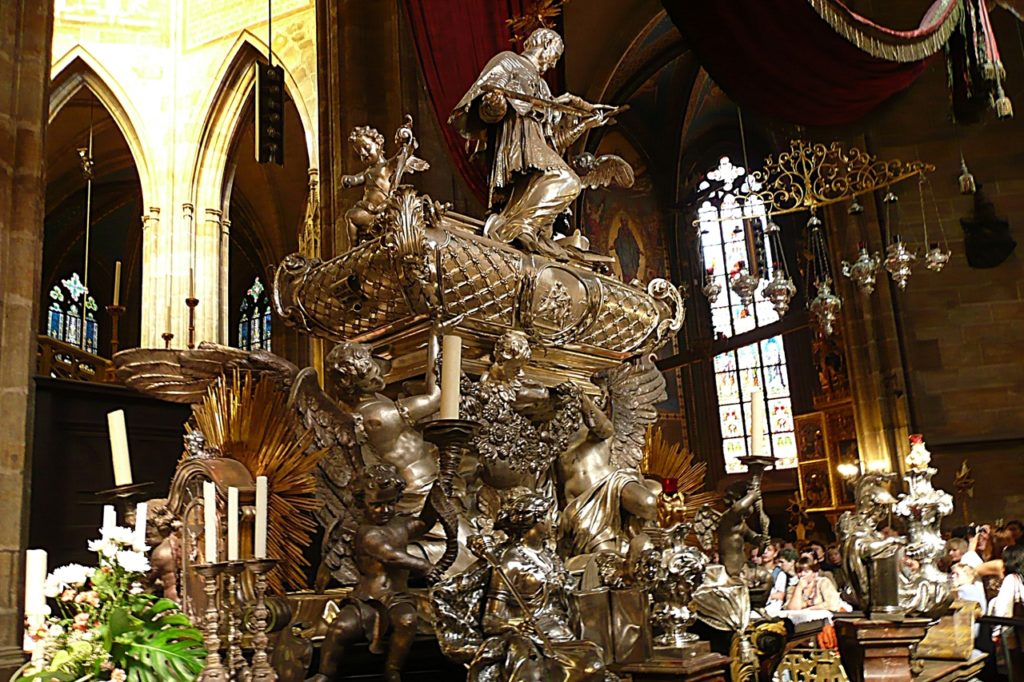
The bell tower
You can climb the 287 stairs to get to the top of the church tower and look out over the city. You can also see the bells. The biggest bell weighs around 15 tons and is called Zikmund!
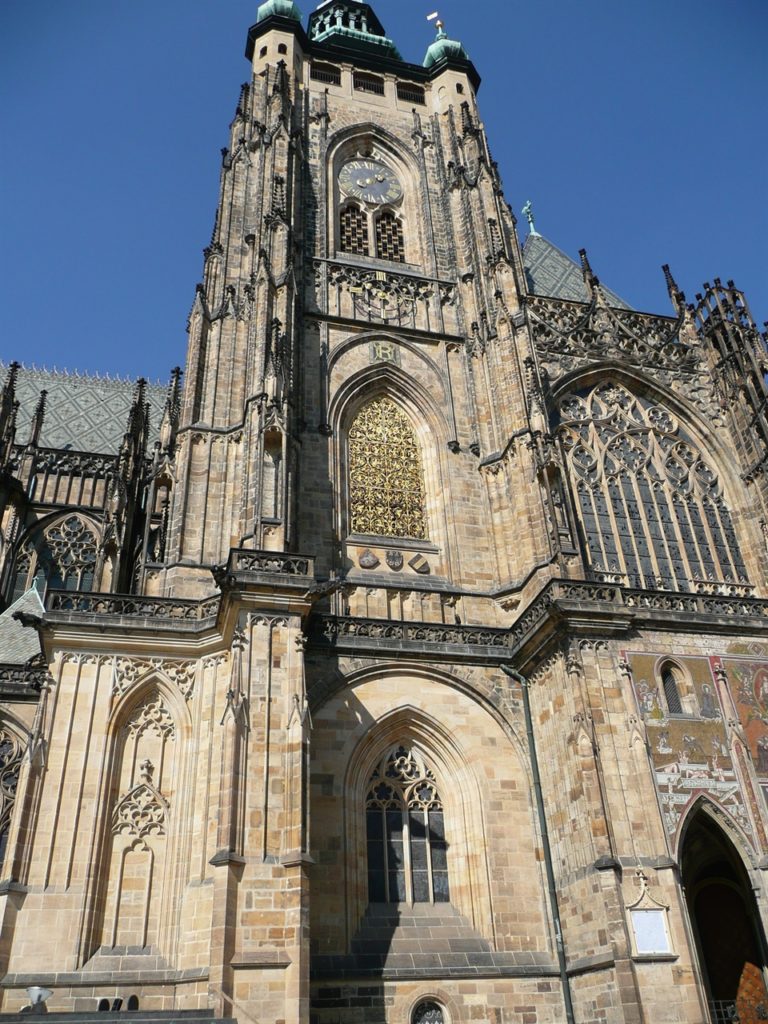
Old Royal Palace
Vladislav Hall
Vladislav Hall of Prague Castle was built in the 15th Century. The hall was used as a throne room, for coronation feasts, and for assemblies of the Bohemian nobles. Tournaments of chivalry were also held here. Knights could ride into the hall on their horses through the rider’s staircase. It was the largest hall in medieval Prague measuring 60 metres long, and 16 metres wide. The ceiling is 12 metres high and vaulted with sinuous ribs that look like vines growing up out of the wall columns. More recently it has been used as a site for markets and presidential elections.
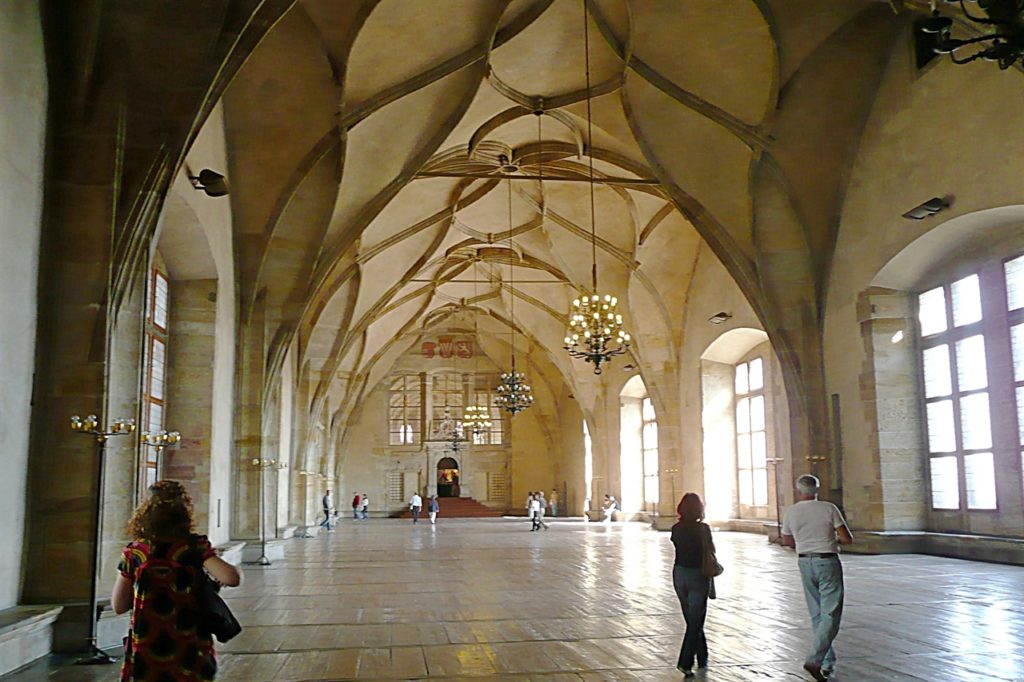
Just off Vladislav Hall is a sun-drenched terrace with magnificent views overlooking the Garden on the Ramparts. From the terrace you have panoramic views of the entire city of Prague, and up the Vltava river. You can soak up the sunshine while enjoying the amazing views, including watching people the size of ants streaming across the Charles Bridge.
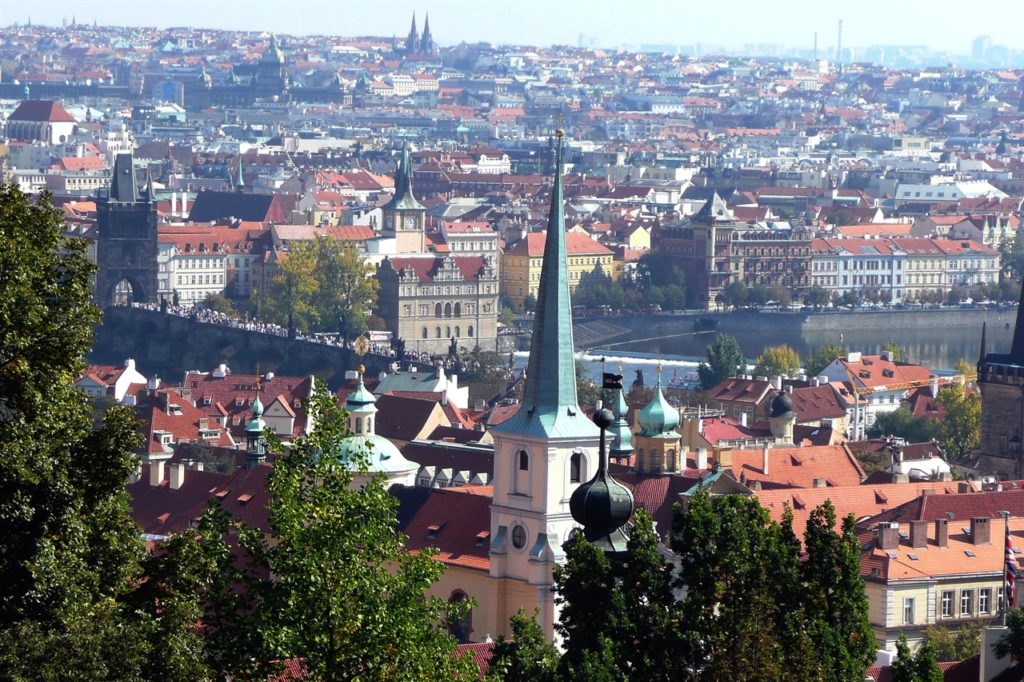
The view of Prague from the observation gallery on the southern wall of the Vladislav Hall.
Nowadays the exit from the Vladislav Hall is formed by the Riders’ Staircase. This was built originally to enable knights to enter the hall on horseback in order to take part in the jousting competitions held in it. The staircase is vaulted with a complicated Late Gothic rib vault.


The vaulted rib on the roof in the hallway leading to the riders stairs.
New Land Rolls Room
The first thing you do when you enter this room is look up. This is because there are ornately painted coats of arms all over the roof. These coats of arms on the walls and vaults commemorate the individuals who held important land offices from the 16th to the 18th century.


St George’s Basilica
This is the oldest surviving church building within the Prague Castle Complex, founded by Vratislav 1 of Bohemia in 920. Substantially rebuilt following a fire in 1142, the basilica is a combination of Baroque, Gothic and Romanesque architecture.


Golden Lane
Lined by 11 historic houses, this small street dates from the 15th century.
Period scenes inside each house demonstrate the lives of the artisans who once lived and worked there. The castle servants and marksmen inhabited these houses. Many goldsmiths also lived there. Goldsmiths Lane was the original name of this lane, with the name “Golden Lane” documented from the 16th century.


Daliborka Tower
This tower forms part of the gothic fortifications of Prague Castle. Found at the end of Golden Lane, it served as a prison until the end of the 18th century. Named after its first inmate, who learned to play the violin during his long stay in the tower, awaiting his execution. A dungeon is located underneath the basement of the tower, accessible through a hole in the floor. Prisoners moved into and out of the dungeon on a pulley system.


Garden on the Ramparts
This garden formed a green belt beneath most of the southern face wall of Prague Castle Complex. In the mid 19th century the garden became cultivated as a natural park. A fortification wall built around the area in 1849 added




Take your time
It is worth allowing yourself at least half a day to tour the castle complex. From Old Town Square, walk across the Charles Bridge and up Nerudova Street towards the Castle. It’s a big climb, but there are shops and cafes that you can stop in along the way for a rest if required. Here’s a walking map for you.
Where to stay
We stayed in an apartment in Prague Central Residence and found this a fabulous location. Close to supermarkets to buy groceries and within walking distance of the attractions in the city. It didn’t take long to walk to the Prague Castle Complex from our apartment.
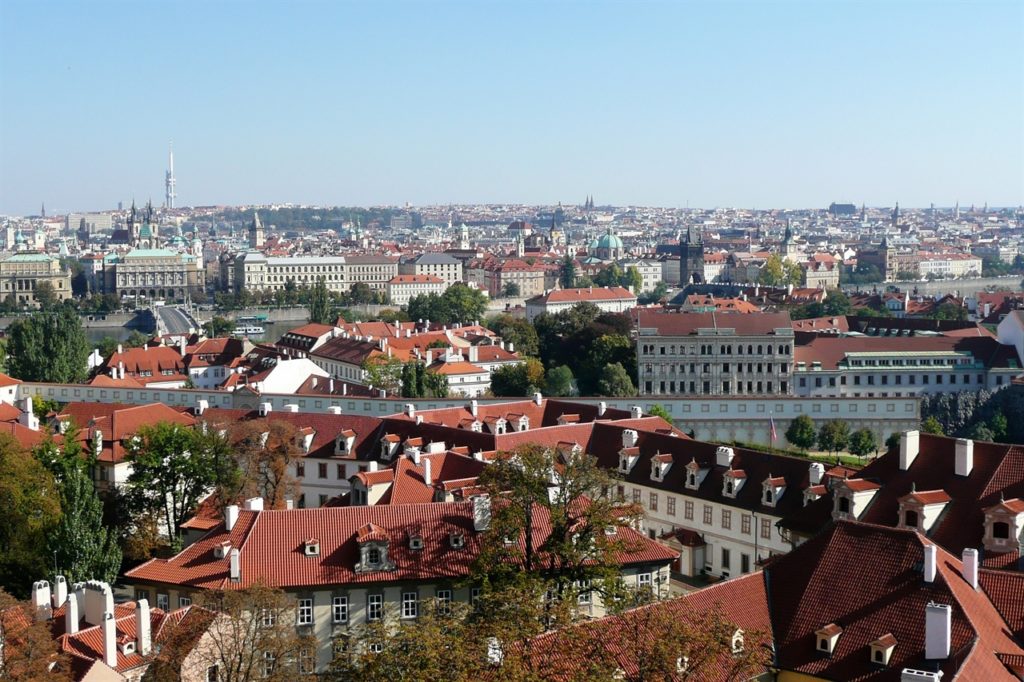
If you enjoyed reading this post, please share the link with your friends or pin it on Pinterest. As always, I appreciate your support. Thank you for reading.
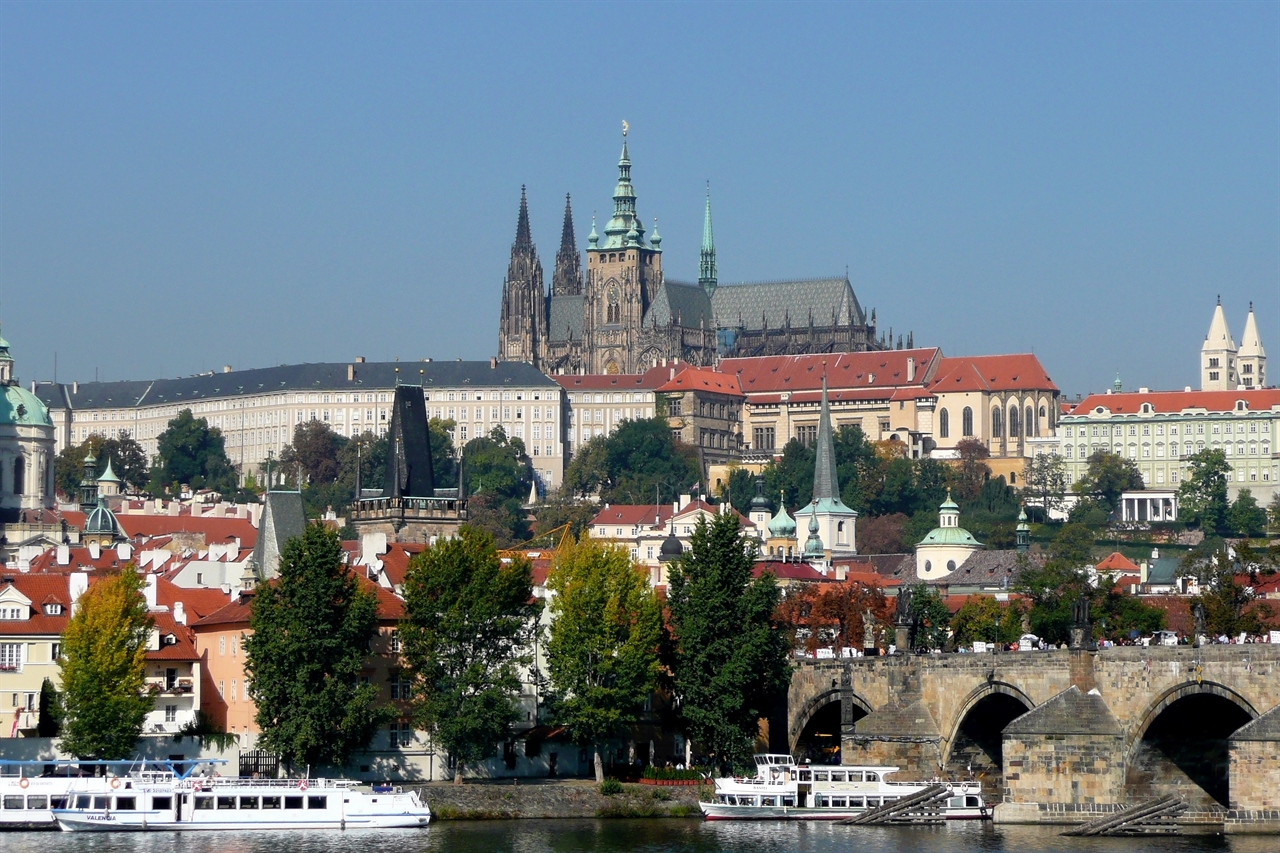
Leave a Reply